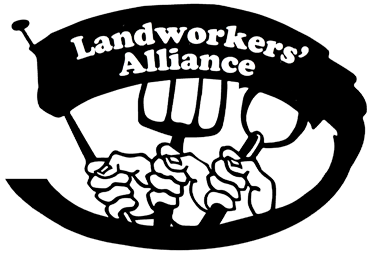In this blog, LWA’s Mobilisation and Engagement Coordinator Humphrey Lloyd looks at Indian farmer protest through the lens of the market reform that hit the dairy industry in the UK. Is it time for UK dairy farmers to learn from Indian dairy farmers?
Indian farmers are on the streets in their hundreds of thousands resisting the imposition to a package of three laws that will deregulate the farm sector. The free-market minded government hopes reforms will open the country to investment and see the emergence of a more modern and efficient industry. Striking farmers on the other hand, fear falling prices and the marginalisation of small family farms by ‘behemoths.’ As this debate rages on the streets and in the halls of power in Dehli, it is interesting to reflect on how market reforms have impacted UK farming and farmers in recent times. And no farmers have been impacted by market orientated reform as much as those beleaguered women and men, who produce the perishable food that almost all of us consume everyday: milk.
In 1950 there were 196,000 dairy farmers in the UK, yet today there are a mere 12,000, representing a drop of more than 95% since the post-war era. This catastrophic collapse of a key land based sector is the result of a series of political decisions to liberalise the market, allowing for price fluctuation and market consolidation, similar to those that will be ushered in India by the three laws if the Modi’s government has its way.
In the post war era the sale of milk (like many other key agricultural products) was regulated by the Milk Marketing Board (MMB) which guaranteed minimum prices and ensured the survival of small and medium farms, even as a more industrialised 10% of big farmers began to be able to withstand lower prices. In 1964 the abolition of Retail Price Maintenance prevented producers from dictating minimum resale prices which resulted in supermarkets using milk as a ‘loss leader’ to tempt buyers into their stores on a daily basis. Following this, when the UK joined the EU in 1973 the MMB was seen to conflict with the EU agenda of a free single market and so its powers to regulate were eroded. In 1994 the MMB was disbanded altogether, leading to a spectacular decline in prices which have never recovered. Since then three big processors – Arla, Wiseman and Dairy Crest -have assumed such market control that they dictate low prices to farmers, often below the cost of production
The era of rock-bottom prices has lead to larger farms swallowing the smaller ones as they exploit their comparative advantage to produce high volumes of milk at low cost. The end result is a highly consolidated sector in which the average dairy herd has risen to 150 head of cattle. It is a bitter irony that these big herds of cows, each one of which can produce up to 10,000 litres of milk per year, still barely afford dairy farmers a decent living. A colleague working in the sector told me they have to speak to the National Suicide Prevention Alliance every month in connection to a dairy farmer who can no longer cope with the work load, the low prices and the debt. One is led to draw a jaundiced conclusion as to the market merits of the dairy industry.
India is the worlds biggest milk producer, employing 90 million people. Currently the sector resembles something much closer to food sovereignty than anything we are used to in the UK: 85% of milk in India is produced by small farmers and cooperatives, and local markets are the destination for the vast majority of this highly culturally valued food product. Is the UK a grim vision of what their dairy sector could look like if the farmers and civil society fail on the streets of Delhi?
With Brexit, farmers here in the UK will soon be facing threats of their own from free-trade agreements with country’s such as the US with lower food and farming standards than our own. The inspiring Ghandian legacy of organised civil society in defence of dignity that we are currently seeing in India, might well be one we have to call on in Britain only too soon…
